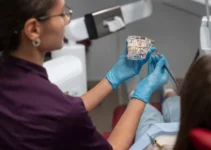After experiencing an unsuccessful embryo transfer, it’s crucial to understand the next steps in your fertility journey. While an implantation failure can be emotionally challenging, it’s important to remember that many couples achieve success in subsequent attempts. Working closely with your fertility specialist, you’ll need to evaluate potential factors that may have contributed to the unsuccessful transfer, consider necessary protocol adjustments, and ensure both physical and emotional preparation for your next attempt. This comprehensive approach will help optimize your chances for a successful future transfer.
Understanding Implantation Failure
Implantation failure occurs when an embryo fails to attach to the uterine lining during an IVF cycle. This challenging situation affects approximately 30-40% of IVF transfers, even with seemingly perfect embryos and optimal conditions. While emotionally devastating, it’s crucial to understand that a failed transfer doesn’t mean the end of your fertility journey.
Research shows that cumulative success rates increase significantly with subsequent transfers, with many patients achieving pregnancy within three attempts. The emotional impact of implantation failure is profound, and it’s completely normal to experience feelings of grief, disappointment, and anxiety. However, each unsuccessful attempt provides valuable information that can help optimize future transfers.
Common Causes of Implantation Failure
The reasons behind implantation failure are often complex and multifaceted. Medical research has identified several key factors that can impact implantation success. Embryo quality plays a crucial role, including chromosomal abnormalities that may not be visible even in apparently healthy-looking embryos.
Uterine factors represent another significant category, including:
- Endometrial thickness and receptivity issues
- Structural abnormalities like polyps or fibroids
- Immune system responses
- Blood clotting disorders
Additional factors may include hormonal imbalances, advanced maternal age, and lifestyle factors such as stress levels and body mass index. Understanding these potential causes is crucial for developing an effective treatment plan for future transfers.
Diagnostic Tests After Failed Transfer
Following an implantation failure, your fertility specialist may recommend a comprehensive evaluation including several key diagnostic tests. The endometrial receptivity analysis (ERA) has emerged as a valuable tool, helping to identify the optimal timing for embryo transfer by analyzing the genetic expression of endometrial tissue. Other essential diagnostic procedures include:
- Hysteroscopy to examine the uterine cavity
- Advanced hormone level testing
- Immunological testing
- Detailed sperm DNA fragmentation analysis
Modern reproductive medicine also offers genetic testing options such as PGT-A (Preimplantation Genetic Testing for Aneuploidies) for future embryos, which can significantly improve success rates in subsequent transfers.
Understanding implantation failure and preparing for next steps is crucial in your fertility journey. We encourage you to explore our related articles on endometrial preparation, embryo quality assessment, and advanced reproductive techniques to better understand your options for future treatments.
Medical preparations for the next transfer
Preparing for a subsequent embryo transfer after a failed attempt requires careful medical planning and evaluation. A comprehensive medical review is essential to identify potential factors that may have contributed to the previous unsuccessful transfer. Your fertility specialist will typically recommend waiting 1-3 menstrual cycles before attempting another transfer to allow your body to recover fully.
During this preparation period, your doctor will conduct several important assessments, including:
- Hormonal blood tests to evaluate endocrine function
- Ultrasound examination of the uterine lining
- Review of previous embryo quality and transfer technique
- Assessment of immune factors and blood clotting parameters
Treatment protocol adjustments
Based on the analysis of your previous cycle, your fertility specialist may recommend specific protocol modifications. Personalization of the treatment plan is crucial for optimizing success rates. This might include adjusting medication dosages, changing the timing of certain medications, or incorporating different hormone supplements.
Recent studies have shown that protocol adjustments may include:
- Modified estrogen preparation protocols
- Alternative progesterone administration methods
- Adjusted timing of embryo transfer
- Implementation of new embryo selection techniques
Your doctor may also consider using advanced diagnostic tools such as endometrial receptivity analysis (ERA) to determine the optimal timing for embryo transfer based on your personal biological clock.
Additional treatments and supplements
To enhance the chances of successful implantation, your doctor might recommend supplementary treatments. Evidence-based complementary therapies can play a significant role in improving endometrial receptivity and overall reproductive health.
Common additional treatments may include:
- Endometrial scratching in selected cases
- Growth factor supplementation
- Immunomodulatory treatments
- Antioxidant supplementation
Research has demonstrated that certain supplements like vitamin D, omega-3 fatty acids, and CoQ10 may support reproductive health, though these should always be taken under medical supervision. If you found this information helpful, we encourage you to explore our other articles about embryo quality optimization, lifestyle factors affecting fertility, and advanced reproductive technologies. Understanding these aspects can help you make informed decisions about your fertility journey.
Lifestyle Modifications
When preparing for another embryo transfer after a failed attempt, making specific lifestyle modifications can significantly improve your chances of success. Research shows that lifestyle factors can impact implantation rates by up to 30%. These changes should ideally begin at least 3 months before the next transfer attempt, as this is the time needed for optimal egg quality improvement.
The key areas to focus on include maintaining a healthy BMI, eliminating harmful habits such as smoking and excessive alcohol consumption, and ensuring adequate sleep patterns. Studies have demonstrated that women with a BMI between 20-25 have the highest implantation success rates. Additionally, exposure to environmental toxins should be minimized during this preparation period.
Diet and Nutrition Recommendations
A fertility-focused diet plays a crucial role in preparing for embryo transfer. Mediterranean-style eating patterns have been associated with improved implantation rates. Essential nutrients that support implantation include:
- Folate-rich foods (leafy greens, legumes)
- Omega-3 fatty acids (fatty fish, walnuts)
- Antioxidant-rich fruits and vegetables
- Lean proteins and complex carbohydrates
- Iron-rich foods (especially for women with low ferritin levels)
Research indicates that women who follow these dietary guidelines for at least 12 weeks before transfer show improved endometrial receptivity. Hydration is equally important, with studies recommending 2-3 liters of water daily to support optimal reproductive function.
Exercise and Stress Management
Finding the right balance in physical activity is crucial when preparing for an embryo transfer. Moderate exercise for 150 minutes per week has been shown to improve implantation rates, while excessive high-intensity workouts can have a negative impact. The focus should be on low-impact activities such as walking, swimming, or prenatal yoga.
Stress management is equally important, as elevated cortisol levels can interfere with implantation success. Recommended stress-reduction techniques include:
- Daily meditation or mindfulness practices
- Regular acupuncture sessions
- Progressive muscle relaxation
- Cognitive behavioral therapy
For more comprehensive information about improving your chances of successful implantation, we recommend exploring our related articles on endometrial preparation, hormone optimization, and advanced fertility treatments. Understanding these aspects can help you make informed decisions about your fertility journey.
Emotional Support and Mental Preparation
Dealing with an unsuccessful implantation can be emotionally challenging, making psychological support essential for those preparing for another embryo transfer. Studies show that patients who receive adequate emotional support during fertility treatments experience lower stress levels and potentially better outcomes in subsequent attempts.
Research published in the Journal of Reproductive Medicine indicates that incorporating mind-body techniques into your preparation routine can significantly reduce anxiety levels and improve overall well-being. These techniques have shown to decrease cortisol levels by up to 20%, which may positively influence implantation success rates.
Coping Strategies
Implementing effective coping mechanisms is crucial for managing the emotional challenges of fertility treatment. Here are some evidence-based strategies that have proven beneficial:
- Practice mindfulness meditation for 10-15 minutes daily
- Engage in moderate physical activity like yoga or walking
- Maintain a fertility journal to process emotions
- Join online support groups with others in similar situations
Studies have shown that patients who actively engage in these coping strategies report a 40% reduction in anxiety levels and improved emotional resilience during treatment cycles.
Support Systems
Building a robust support network is fundamental for emotional stability during fertility treatment. Professional counseling specifically focused on reproductive challenges has been shown to provide significant benefits, with studies indicating that patients who receive counseling report better emotional adjustment and reduced relationship stress.
Research demonstrates that couples who engage in fertility-focused therapy experience improved communication and stronger partnerships throughout their treatment journey. Support can come from various sources:
- Professional fertility counselors and psychologists
- Partner and family support
- Fertility support groups and communities
- Online forums and social media networks
For more comprehensive information about fertility treatment preparation and success strategies, we encourage you to explore our related articles on embryo quality optimization and lifestyle modifications for improved fertility outcomes.
Making Informed Decisions
After experiencing an implantation failure, taking time to process emotions and gather information is crucial for making well-informed decisions about future treatments. Research shows that approximately 70% of patients who experience a failed transfer can achieve success in subsequent attempts with proper evaluation and adjustments to their treatment protocol.
The timing of a subsequent embryo transfer is a critical factor that should be carefully considered. Studies indicate that waiting at least one full menstrual cycle before attempting another transfer can improve success rates by allowing the body to recover and optimize endometrial conditions. Additionally, this period provides an opportunity for comprehensive testing and potential protocol adjustments.
Questions to Ask Your Medical Team
Before proceeding with another embryo transfer, it’s essential to have an in-depth discussion with your medical team. Here are key questions that should be addressed:
- What factors might have contributed to the failed implantation?
- Are additional genetic testing options recommended for remaining embryos?
- Should we consider endometrial receptivity testing?
- What protocol adjustments could improve our chances of success?
- Would additional treatments like immunotherapy be beneficial?
Documentation shows that patients who engage in detailed discussions with their healthcare providers about these aspects have a better understanding of their treatment plan and often experience reduced anxiety levels during subsequent attempts.
Treatment Alternatives
Recent advances in reproductive medicine have expanded the range of treatment options available after implantation failure. These alternatives may include endometrial scratching, which some studies suggest could improve implantation rates in specific cases, or the use of advanced embryo selection techniques such as time-lapse monitoring.
Another consideration is the potential benefit of adding supplementary treatments such as:
- Advanced endometrial preparation protocols
- Specialized embryo culture conditions
- Assisted hatching techniques
- Platelet-rich plasma therapy
Research indicates that personalized treatment approaches, taking into account individual patient factors and previous cycle outcomes, can significantly improve success rates in subsequent transfers.
If you found this information helpful, we encourage you to explore our other articles on topics such as embryo testing methods, endometrial optimization strategies, and the latest advances in reproductive technology. Understanding all available options is key to making informed decisions about your fertility journey.
Key Questions About Failed Implantation And Next Steps
Understanding what to do after an implant failure is crucial for patients and medical professionals. Here’s essential information about the process and next steps.
What Is The Recommended Procedure For Removing A Failed Implant And Preparing For A New One?
The recommended procedure involves a careful extraction process using specialized tools. First, an extractor device is inserted to carefully remove the failed implant. Then, a gentle drilling of the socket is performed using atraumatic trephine drills (2-5mm in depth). This approach reduces the maximum torque by half, making it easier to break the implant-bone connection. The new implant can then be placed in the prepared site. This minimized trauma approach helps ensure better success rates for the subsequent implant.




